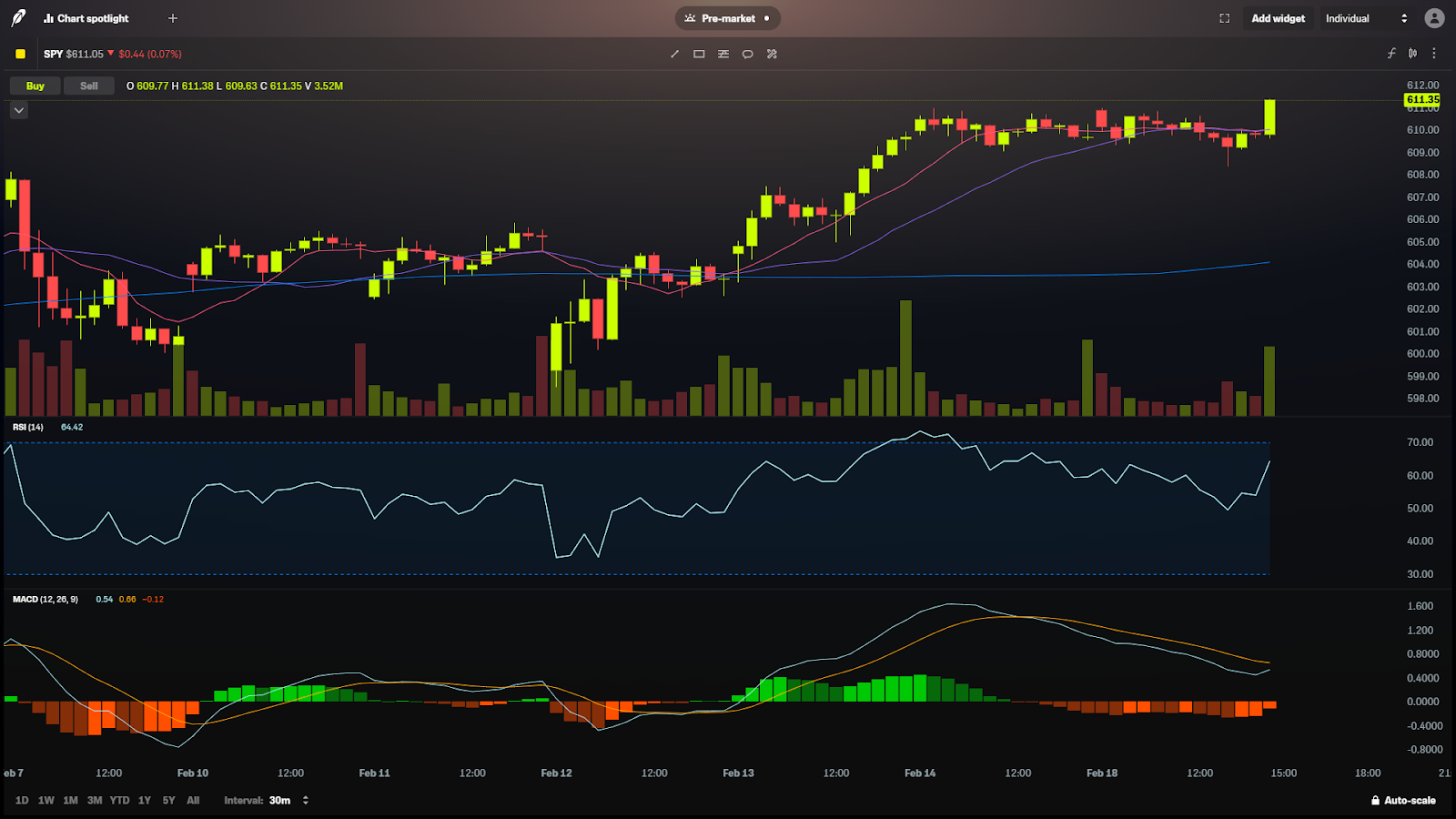
Understanding the Moving Average Convergence Divergence (MACD)
The Moving Average Convergence Divergence (MACD) is a cornerstone of technical analysis, offering valuable insights into market momentum and trend direction. Whether you’re a day trader seeking short-term profits or a swing trader aiming for longer-term gains, understanding the MACD can significantly enhance your trading strategies. This guide will break down the MACD, explore its applications in day trading and swing trading, and demonstrate how to combine it with other technical indicators for optimal results.
What is the MACD?
The MACD is a momentum oscillator that generates trading signals by comparing two different moving averages of an asset’s price. Typically, it calculates the difference between a 26-period and a 12-period Exponential Moving Average (EMA). This difference forms the MACD line. A 9-period EMA of the MACD line, known as the signal line, is then plotted on the chart.
How the MACD Works
The MACD provides valuable insights into:
- Trend Direction: When the MACD line is above the zero line, it generally suggests an uptrend. Conversely, a MACD line below zero indicates a downtrend.
- Momentum: The distance between the MACD line and the zero line reflects the strength of the current trend. A larger distance indicates stronger momentum.
- Trend Reversals: Crossovers between the MACD line and the signal line often signal potential trend reversals. A bullish crossover occurs when the MACD line moves above the signal line, suggesting a potential uptrend. A bearish crossover occurs when the MACD line moves below the signal line, suggesting a potential downtrend.
Using the MACD for Day Trading
- Identifying Short-Term Trends: In day trading, the MACD can help identify short-term trends and momentum shifts.
- Timing Entries and Exits: Day traders can use MACD crossovers to time entries and exits within short-term trading ranges.
- Confirming Breakouts: MACD can confirm breakout signals from price patterns, such as flags and pennants.
Using the MACD for Swing Trading
- Identifying Intermediate-Term Trends: Swing traders can use the MACD to identify and ride intermediate-term trends.
- Filtering Trading Signals: MACD can help filter out short-term noise and focus on more sustainable trends.
- Exiting Trades: Swing traders can utilize MACD crossovers as signals to exit positions and lock in profits.
Combining MACD with Other Technical Indicators
- Candlestick Patterns: Combining MACD with candlestick patterns, such as engulfing patterns, hammer/hanging man patterns, and doji, can significantly improve trade accuracy.
- Volume Analysis: Analyzing volume alongside MACD signals can help confirm the strength of a trend. High volume during a bullish crossover strengthens the signal, while low volume may indicate a weaker move.
- Support and Resistance: MACD can be used to identify potential entry and exit points near support and resistance levels.
A Step-by-Step Guide to Using the MACD:
- Identify the Trend: Determine the overall trend direction by observing the position of the MACD line relative to the zero line.
- Wait for the Crossover: Monitor for a clear crossover between the MACD line and the signal line.
- Confirm with Candlestick Patterns: Observe the candlestick patterns following the crossover for confirmation.
- Analyze Volume: Consider the volume accompanying the crossover to assess the strength of the move.
- Time Entries and Exits: Use the MACD and candlestick patterns to time entries and exits strategically.
- Manage Risk: Implement proper risk management techniques, such as stop-loss orders, to protect your capital.
Key Considerations:
- The MACD is not a perfect indicator. It can generate false signals, especially in choppy markets.
- Combining the MACD with other technical analysis tools and fundamental analysis can improve trading accuracy.
- Consistent discipline and risk management are crucial for successful trading, regardless of the indicators used.
Conclusion
The MACD is a valuable tool for traders of all levels. By understanding its principles and incorporating it into your trading strategy, you can gain a deeper understanding of market momentum and make more informed trading decisions.
Disclaimer: This article is for informational purposes only and does not constitute financial advice. Trading involves significant risk, and past performance is not indicative of future results. Always conduct thorough research and consult with a qualified financial advisor before making any investment decisions.




